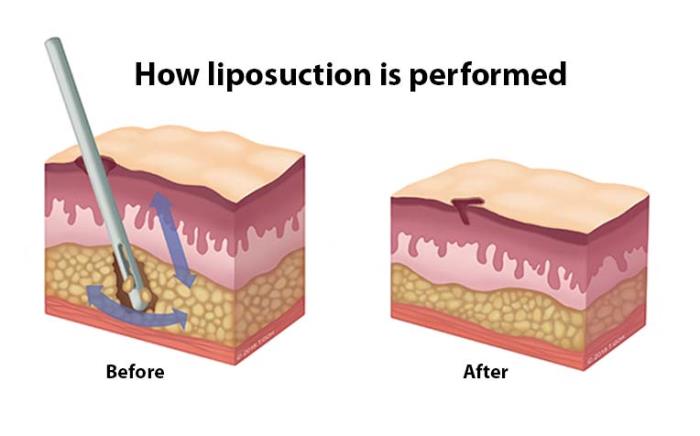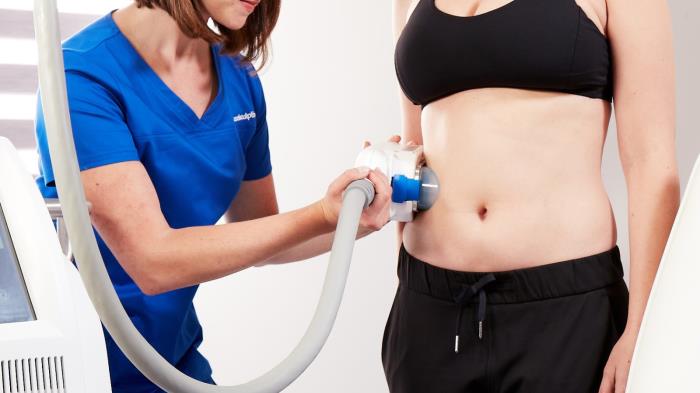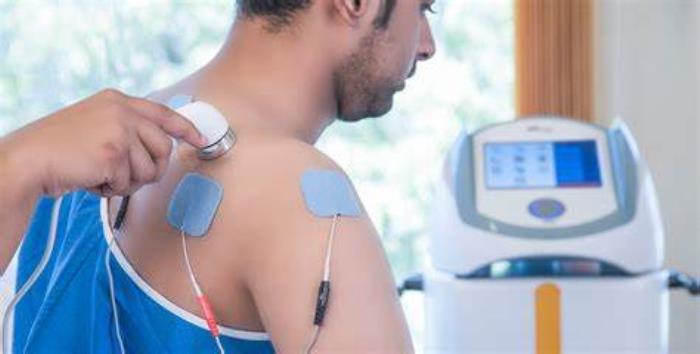Full body lift surgery is a comprehensive procedure designed to reshape and rejuvenate the body by removing excess skin and fat from multiple areas. Often performed on individuals who have undergone significant weight loss or are experiencing age-related changes, this surgery targets regions such as the abdomen, thighs, arms, and buttocks. The procedure not only improves aesthetics by providing a more contoured appearance but also addresses functional issues related to excess skin, such as discomfort or irritation.
The Need for Non-Surgical Alternatives
As more individuals seek to enhance their body shape and contour, the demand for non-surgical alternatives to traditional surgical procedures has increased. Many patients may be hesitant to undergo invasive surgeries due to concerns about recovery time, potential complications, and the visibility of scars. Non-surgical options provide a less invasive approach, often requiring little to no downtime and offering quicker recovery.
Additionally, non-surgical methods can appeal to a broader range of individuals, including those who may not be candidates for surgery due to health concerns or those looking for gradual changes. As advancements in technology and techniques continue to evolve, non-surgical body contouring options are becoming more effective, safe, and popular.
Non-Surgical Body Contouring: An Introduction
Non-surgical body contouring refers to a variety of aesthetic treatments designed to reduce fat and improve body shape without the need for invasive surgery. These methods utilize advanced technologies to target and eliminate fat cells, resulting in a slimmer and more contoured appearance. Some common non-surgical options include cryolipolysis (CoolSculpting), radiofrequency, ultrasound, and laser therapies.
These procedures can effectively address localized fat deposits and enhance body contours while promoting skin tightening. Typically, non-surgical body contouring requires minimal recovery time, allowing patients to return to their daily activities shortly after treatment. As a result, they are increasingly popular among those seeking to improve their appearance with less disruption to their lifestyle.
Liposuction: Is It a Non-Surgical Option?
While liposuction is a widely recognized body contouring procedure, it is classified as a minimally invasive surgical option rather than a non-surgical one. The technique involves the removal of excess fat deposits through small incisions using suction devices. Although it is less invasive compared to traditional surgeries, it still requires anesthesia and has associated risks and recovery times.

Patients seeking non-surgical fat reduction may consider other techniques, such as CoolSculpting or laser lipolysis, which provide similar results without the need for incisions or anesthesia. Liposuction may be appropriate for individuals looking for more significant fat removal and contouring but is not categorized as a non-surgical alternative.
CoolSculpting: The Benefits of Cryolipolysis
CoolSculpting, also known as cryolipolysis, is a popular non-surgical body contouring technique that targets and eliminates stubborn fat cells through controlled cooling. This procedure works by freezing fat cells in specific areas of the body, causing them to crystallize and eventually die off. Over time, the body naturally metabolizes and eliminates these dead fat cells, leading to a noticeable reduction in fat without harming surrounding tissues.

The benefits of CoolSculpting include its non-invasive nature, minimal downtime, and the ability to target specific areas such as the abdomen, flanks, thighs, and double chin. Most patients can resume their regular activities immediately after treatment, making it a convenient option for those with busy lifestyles. Additionally, results can continue to improve for several months as the body processes the treated fat cells, leading to a gradual and natural-looking transformation.
Ultrasound Therapy for Body Contouring
Ultrasound therapy is a non-invasive body contouring technique that utilizes high-frequency sound waves to target and break down fat cells beneath the skin's surface. The procedure promotes skin tightening and stimulates collagen production, enhancing overall skin texture. Many patients choose ultrasound therapy for its safety, minimal downtime, and effectiveness in reducing localized fat deposits without the need for surgery.

Radiofrequency Treatments: How They Work
Radiofrequency treatments work by delivering controlled heat to the deeper layers of the skin, promoting collagen remodeling and fat reduction. This technique effectively tightens skin and reduces the appearance of cellulite by stimulating blood circulation and encouraging cellular metabolism. Patients typically experience minimal discomfort and can return to daily activities almost immediately, making radiofrequency a popular choice for body contouring.
Kybella: Targeting Submental Fat Without Surgery
Kybella is an FDA-approved injectable treatment specifically designed to target submental fat, commonly known as a double chin. It contains deoxycholic acid, which breaks down fat cells when injected into the area. The treatment is minimally invasive, with most patients experiencing noticeable improvements in their chin profile after a series of sessions. Kybella offers a non-surgical solution for those looking to enhance their facial contours without downtime.
Body Wraps: Do They Really Work?
Body wraps are often marketed as a quick fix for body contouring, claiming to reduce inches and improve skin appearance. While some wraps can lead to temporary water weight loss and tighter-looking skin due to compression, they do not provide permanent fat reduction. Results can vary significantly from person to person, and any effects are usually short-lived, making them a less effective option for long-term body contouring.
The Role of Skin Tightening Creams and Treatments
Skin tightening creams and treatments are designed to enhance skin elasticity and firmness, often containing active ingredients like retinol and hyaluronic acid. While they can provide temporary improvements in skin texture and hydration, their effects are generally modest compared to more invasive procedures. Combining topical treatments with other body contouring methods can enhance overall results, making them a complementary option for those seeking to improve skin appearance.
SculpSure: A Non-Invasive Fat Reduction Technique
SculpSure is a non-invasive body contouring procedure that uses laser technology to target and eliminate stubborn fat cells. The device delivers controlled heat to the treatment area, causing fat cells to undergo apoptosis, or cell death, without damaging surrounding tissue. Patients often see visible results within weeks, with no downtime required, making SculpSure a convenient option for those looking to contour their bodies effectively.
The Impact of Diet and Exercise on Body Contouring
Diet and exercise play crucial roles in body contouring efforts. A balanced diet rich in nutrients and regular physical activity can help individuals achieve and maintain their desired body shape. While non-surgical techniques can enhance results, they are most effective when combined with healthy lifestyle choices, promoting overall well-being and long-term success in body contouring.
Combining Non-Surgical Techniques for Optimal Results
Combining various non-surgical techniques can optimize body contouring outcomes. For instance, pairing ultrasound therapy with radiofrequency treatments or injectables like Kybella can enhance fat reduction and skin tightening effects. Tailoring a treatment plan to individual goals ensures a comprehensive approach, maximizing results while minimizing downtime and invasiveness.
Pros and Cons of Non-Surgical Alternatives
Non-surgical body contouring alternatives offer numerous benefits, including minimal downtime, reduced risk of complications, and less invasive procedures. However, they may require multiple sessions for optimal results and typically provide less dramatic outcomes compared to surgical options. Understanding the pros and cons helps patients make informed decisions based on their aesthetic goals and lifestyle preferences.
What to Expect from Non-Surgical Body Contouring
Patients considering non-surgical body contouring should expect a thorough consultation to discuss their goals and evaluate treatment options. Most procedures require little to no downtime, allowing individuals to resume daily activities quickly. Results vary depending on the technique used and individual factors, with some methods providing immediate changes while others may take weeks to show full effects. Managing expectations is key to achieving satisfaction with non-surgical body contouring results.
The Importance of Consultation with a Specialist
Consultation with a qualified specialist is essential before undergoing any body contouring procedure. During this meeting, patients can discuss their aesthetic goals, evaluate their medical history, and receive personalized recommendations tailored to their unique needs. A specialist's expertise helps ensure that patients choose the most appropriate non-surgical alternatives for optimal results and safety.
Cost Comparisons: Non-Surgical vs. Surgical Options
When evaluating body contouring options, cost is a significant consideration. Non-surgical procedures typically have lower upfront costs compared to surgical interventions, which often require additional expenses for anesthesia, facility fees, and post-operative care. However, patients should also consider the number of sessions needed for non-surgical treatments to achieve desired results, as cumulative costs may approach or exceed those of surgical options over time.
Long-Term Results: What You Need to Know
Long-term results from non-surgical body contouring can vary based on individual factors, including lifestyle choices and metabolism. While these techniques can effectively reduce fat and improve body shape, maintaining results often requires ongoing commitment to a healthy diet and regular exercise. Understanding the need for lifestyle changes is crucial for sustaining outcomes and maximizing the benefits of non-surgical alternatives.
Success Stories: Real-Life Experiences with Non-Surgical Alternatives
Success stories from individuals who have opted for non-surgical body contouring alternatives provide valuable insights into the potential benefits of these procedures. Many patients report satisfaction with their results, experiencing improved body confidence and enhanced appearance without the need for extensive recovery time. Sharing these real-life experiences can inspire others considering non-surgical options to explore the possibilities for achieving their aesthetic goals.
Exploring the Latest Techniques in Full Body Lift Surgery
Discover the most recent advancements in full body lift surgery techniques. These innovations aim to enhance patient outcomes by minimizing scarring, reducing recovery times, and improving overall results, providing patients with a more comprehensive approach to body contouring after significant weight loss or aging.
Best Full Body Lift Surgery Treatment in India
The Best Full Body Lift Surgery Treatment in India is performed by expert surgeons who utilize advanced techniques to ensure optimal outcomes for patients, offering a personalized treatment plan tailored to individual health needs.
Best Full Body Lift Surgery Hospitals in India
The Best Full Body Lift Surgery Hospitals in India are equipped with cutting-edge technology and facilities, providing top-notch care, including pre-surgery consultations, surgical expertise, and post-operative recovery support to ensure a smooth patient journey.
Full Body Lift Surgery Cost in India
When considering the Full Body Lift Surgery Cost in India, patients benefit from affordable and transparent pricing at leading hospitals, which offer cost-effective treatment options without compromising the quality of care.
Best Full Body Lift Surgery Doctors in India
The Best Full Body Lift Surgery Doctors in India are highly experienced in performing the surgery, utilizing a patient-centric approach that ensures personalized care, precise surgical techniques, and dedicated follow-up care to enhance recovery.
Frequently Asked Questions About Non-Surgical Body Contouring
1. Are non-surgical options effective for significant weight loss?
Non-surgical options are generally more effective for body contouring and fat reduction rather than significant weight loss. These treatments can help reshape specific areas of the body by targeting localized fat deposits, but they are not a substitute for a comprehensive weight loss plan involving diet and exercise.
2. How long do the results of non-surgical treatments last?
The longevity of results from non-surgical treatments varies by procedure and individual factors, such as lifestyle choices. Many patients experience lasting results for several months to a few years, but maintaining a healthy diet and exercise routine is essential to prolong the effects of these treatments.
3. What are the risks associated with non-surgical body contouring?
While non-surgical body contouring treatments generally have lower risks than surgical options, they are not without potential side effects. Common risks include temporary swelling, bruising, and discomfort at the treatment site. It's essential to discuss any concerns with a qualified specialist to understand the specific risks associated with each treatment option.
4. Can I combine non-surgical treatments with other procedures?
Yes, many patients can safely combine non-surgical treatments with other cosmetic procedures to enhance their results. However, it is crucial to consult with a specialist to create a tailored treatment plan that considers your unique needs and health status, ensuring safe and effective outcomes.
5. How do I choose the right non-surgical treatment for my needs?
Choosing the right non-surgical treatment involves evaluating your specific goals, body type, and any underlying medical conditions. Consulting with a qualified specialist can provide valuable insights and recommendations based on a thorough assessment, ensuring you select the most appropriate option for achieving your desired results.